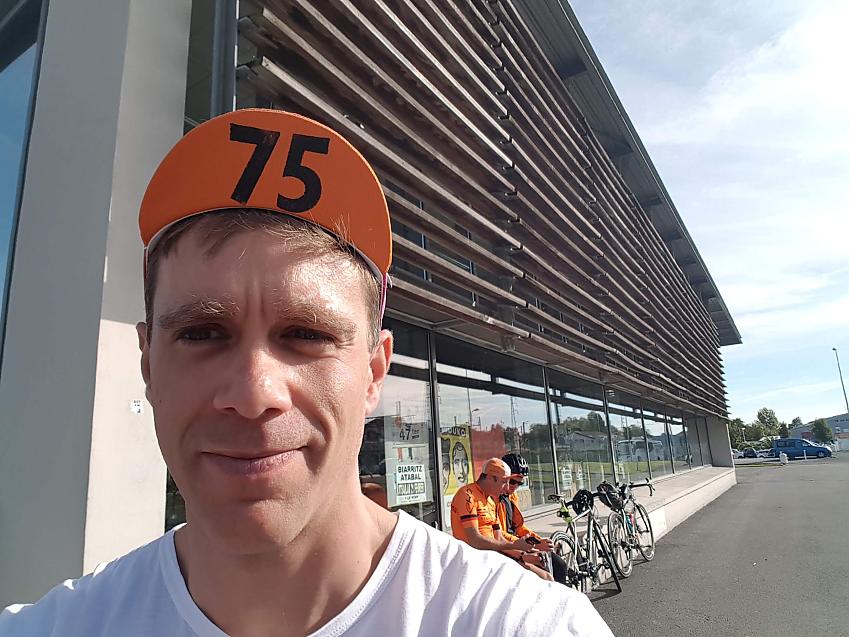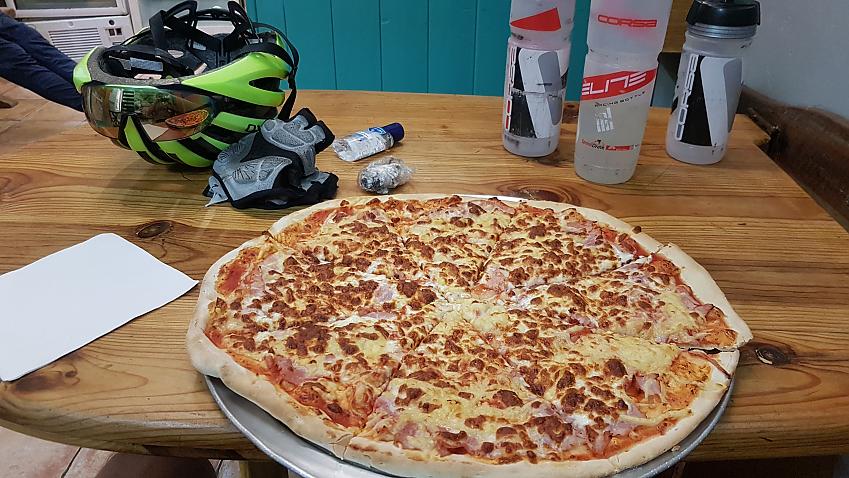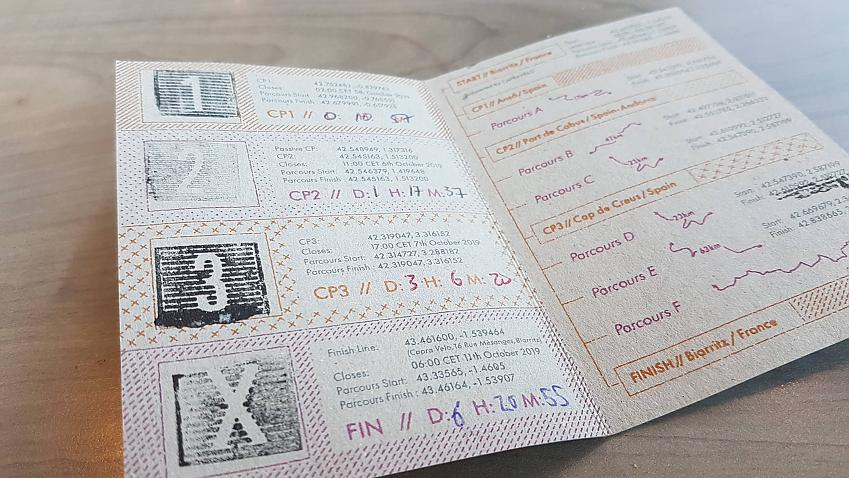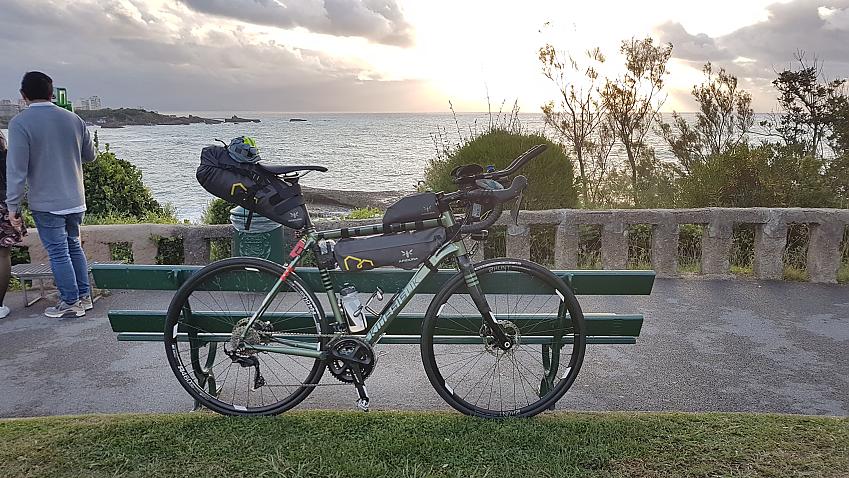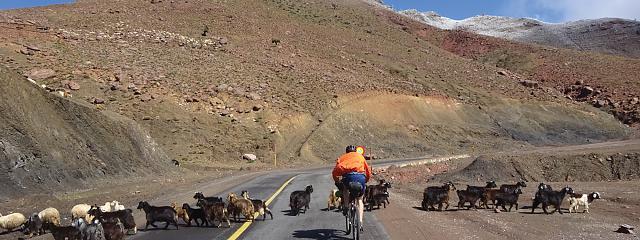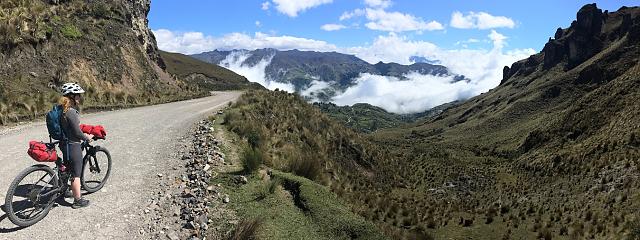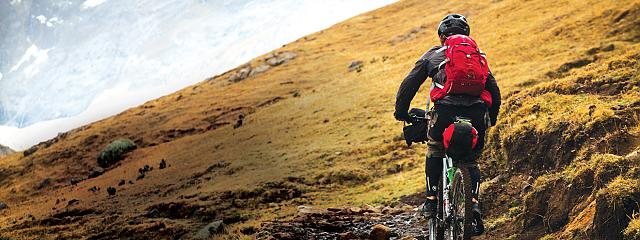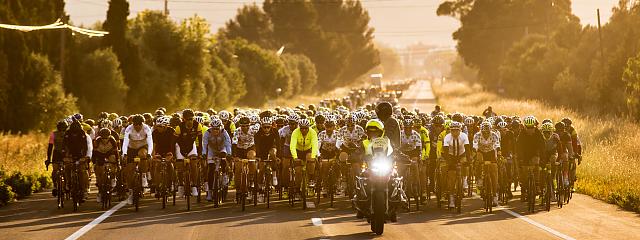
Great Rides: The Trans Pyrenees Race
Great Rides: The Trans Pyrenees Race
In October 2019, I was one of around fifty riders to complete the first Trans Pyrenees Race (or ‘TPRNo1’). The race is a self-supported event requiring a two-way traverse of the Pyrenees mountains.
Starting in Biarritz on the Atlantic coast, we bikepacked through wild and remote mountain areas to Cap de Creus on the Mediterranean Sea. The return route to Biarritz was a ‘greatest hits’ of iconic Pyrenean climbs.
To earn an official finishing place, riders needed to complete the race in less than one week. With 1600km of riding, 30,000m of climbing, 12 hours of darkness every day, and a clock that never stops, seasoned long-distance riders described the race as exceptionally tough.
As a novice to bikepacking races, I can’t compare TPRNo1 to other events, but I can describe how it was one of my most intense, satisfying and all-consuming experiences.
I signed up for the race in January 2019. I had two years of road riding experience. I had managed a couple of 300km rides in Scotland and Wales, and was inspired by big days on small, steep roads.
I hoped that TRPNo1 would give me a huge dose of my favourite kind of riding, combined with the wild terrain and multi-day strategy that I was used to in my other passions of rock climbing and walking in the mountains.
I wanted something to make me push myself on the bike - a hard challenge with a real risk of failure.
In training
Most of my spare time in 2019 was devoted to preparation for the race. When I wasn’t pouring over details of checkpoints or route files, I was testing gear on long rides.
I bought dynamo lighting, aero extensions, and bags for my gear and food.
Every weekend and holiday saw me out on the roads. I learned to ride confidently through the night, to eat hundreds of calories during flying stops at petrol stations, and to keep warm during changing weather.
Mostly, though, I climbed. I rode long loops with thousands of meters of elevation, went on weekend trips to seek out steep roads around the UK, and clocked up days of climbing during holidays with my wife to the mountains of France and Scotland.
Sometimes the preparation was stressful, and sometimes the riding was lonely. But with friends and family quietly encouraging me, the need to be ready for TPRNo1 gave me a deep sense of energy and focus throughout the year.
Mark Ackroyd
In London during the week, I rode laps up to the famous Crystal Palace transmitter, where I could complete a vertical kilometre in chunks of 66 metres before breakfast. Sometimes the preparation was stressful, and sometimes the riding was lonely. But with friends and family quietly encouraging me, the need to be ready for TPRNo1 gave me a deep sense of energy and focus throughout the year.
When October arrived, I flew to Biarritz feeling ready.
The real thing
The registration process involved a day of back and forth from a huge skatepark in Biarritz, where I met the other nervous riders and was issued with three things that made the event feel very real: a GPS tracker; my ‘brevet card’, for collecting checkpoint stamps, and; my race cap, stamped with my race number ‘75’. I associated all of those things with the accounts I had read of long distance racing, and it was exciting to pack them for myself.
The next day saw us sent off in small groups through the drizzly Basque country, and we were quickly onto the long climb of Col de la Pierre St-Martin at nearly 1800m. Rain at the summit gave way to hot, sunny weather as we descended into Spain.
For two days we eased through spectacular valleys and ancient villages. Required sections of course took us along tiny back roads and a stretch of rough gravel. The riding was some of the best I had ever seen, and there was a sense of quiet camaraderie among riders.
At the end of day two, I reached one of the race’s main challenges - the climb into Andorra over the 2300m col of the Port de Cabus.
The climb was on a rough, rocky dirt road through the forest. I started up at 7pm with the sunset, and quickly realised that I had not eaten enough and was low on supplies. I had to dig deep for three hours as I rode and pushed in the darkness. The setting was incredible, with the lights of other bikes visible on the mountainside, company from other riders, and a starry horizon of huge peaks. At the top, the forest road gave way to bright clear skies and to a freezing 1000m descent on moonlit tarmac down to a checkpoint, food and sleep.
The next day I had planned to reach the coast. I had to tackle another monster climb out of Andorra, wind my way through the cols of French Catalonia, and then turn south down 100km of frontier highway to the Spanish coast.
Tired, aching and late to start, I finally perked up on the long descent into France, and then started to ride well as I pressed west through open, rolling landscapes and then steeper, wooded country as I neared the coast.
As night fell, I met faster riders flying west back to Biarritz. We rang our bells and called out in the night: ‘Allez, allez!’
Losing it
I crossed the final col in pitch darkness and was descending happily when I noticed a huge error. I had left open my saddle bag at the summit. The darkness and my mental tiredness had caught up with me. My warm jacket and leg warmers were gone. They were my safety margin for the high mountains ahead - losing them was a disaster.
In desperation, I re-climbed 700m to the col without luck. Now deep into the night, I finally turned back downhill along my route. As I rode, I tapped away on my phone researching how I could replace my lost kit and continue the race. Eventually the road became the expected large highway. It was quiet and safe at that time, but I was shaken and exhausted, and at 1am I found myself freaking out and disoriented on the huge roads.
I cracked, bailed off the road and plotted an alternative route on farm tracks and small roads to a huge tourist hotel. I had made the coast but not the checkpoint, I was missing crucial kit, and I was frazzled.
My fourth day was decisive. I woke feeling woozy but with a clear plan to save the race: buy replacement kit at a local sport store, tag the official headland checkpoint, and be racing back inland before lunch. But the sport store didn’t open as advertised, so I’d waited hours unnecessarily. Worse still, the wind was approaching gale conditions.
As I rode to the lighthouse checkpoint, the situation became comical. Along with other riders, I was forced to ride at walking pace, braced against the powerful gusts. Finally I got off and walked.
Even that was a fight, with the wind constantly threatening to rip my bike out of my hands and throw me onto the rocky scrub. By now it was obvious I would need to scratch from the race, and I arrived at the checkpoint almost relieved.
Luckily, the race volunteers injected some optimism: I was exactly halfway both in distance and time, so was certainly on track.
Even better, a rider, Joss Ridley, turned up at the checkpoint bearing my warm jacket. He had had found on last night’s col and carried it for 100km. I was so grateful I could have kissed him.
With my situation looking better, I hiked back out until the wind subsided, then got on my bike, and got down to the business of reversing 150km of yesterday’s route. This time it was uphill and into a headwind, but I was feeling determined and was soon back into the mountains and just about on track.
For the next two days I crossed the wild feeling Ariege, and started the initimidating fixed return route. With rain and cold temperatures setting in on the summits, I grabbed some warm leggings in the ski town of Bagneres du Luchon before tackling the high passes of the Peyresourde and Azet.
The race’s media car was in town, and it was a novel experience to be ‘papped’ in a boulangerie and then interviewed on the town square as I drank a triple coffee and tried on my new legwear. I was glad of my leggings - the next passes were soaking and bleak.
Descending into Saint-Lary Soulan in the late afternoon, I knew that the next leg was a huge one over the legendary Tourmalet. With darkness approaching and all of my kit soaked, I decided that I would have an early night, and then head over the biggest passes into an improving forecast tomorrow.
The implication was both daunting and exhilarating. The following day I would need to pull a huge ride: 330km with 7000m of climbing including both the Tourmalet and the Aubisque.
By 2am I was back on the road, with a deadline of 6am the following morning to complete the race. Despite the scale of the task, I felt focused and confident.
My body felt good, I trusted my fitness, and I didn’t need to hold anything back. The first two cols were grim in the dark and rain, and I arrived at the top of the Tourmalet ready for a miserable and lonely descent.
As I struggled into all of my warm clothes it was a treat to be joined by Nico, an American rider who always had a smile and a big dose of positive attitude. The sun rose as we plummeted for 20km down the valley, squealing to a halt at the first open cafe for hot coffee. The sun came out to help, and by 11.30am I was on top of the Aubisque, my Whatsapp filling up with encouraging messages.
The rest of the day was increasingly emotional. The climbs kept coming but decreased in length, the autumn countryside seemed almost too perfect, and I just kept on cycling and eating. I felt completely calm and happy.
The only low point came when darkness fell as I slogged along 100km of straight, rolling road before the two final small cols. My head was nodding and I struggled to stay awake. A quick stop under the bright lights of a supermarket car park helped, and so did a bit of singing and dancing as I swigged Red Bull on the deserted tarmac. And that was it - low point over, I headed off toward the last climbs.
On the first of those, the Alto de Izpegi, I realised that I was definitely going to make it.
Trying to get back in time
The moonlit switchbacks and the silent warm night were perfect. For the first time in the race, I called my wife while I was still riding. I wanted to reassure her that I was OK, and to share a slice of that amazing moment. We chatted for a few minutes as I continued upward, and then she left me to the quiet night, to cresting the col, to racing on through the forest, pushing harder as the finish came closer.
Suddenly I was in Biarritz under streetlights, navigating the final turns. The finish was in front of a bike shop, where a few race officials and other riders were waiting with head torches. My brevet card was stamped, beer and congratulations were offered. It was 2am and I was done with hours to spare and ready to sleep.
The main feeling was of relief and satisfaction.
Recovery
Recovering from the race took weeks. There were no aches or pains, but I was constantly hungry and always in need of an extra hour of sleep. Perhaps more importantly was the need to process what had just happened.
The day after the race there was a beach party for competitors, which was a good chance to draw a line under events, but too soon to decompress. With so much crammed into a week, the race seemed like a kaleidoscope of memories and emotions, with crucial details lost and connections broken.
I had to sift through GPS files, photographs and even hotel receipts to piece things together and make sense of the experience and to realise how much I had taken from being part of the race.
I wouldn’t try to persuade anyone to take part in a similar race - if it’s for you, you won’t need persuasion. But if you’re interested, TPRNo2 takes place in October 2020. The deadline to apply for a place is 2 Feb 2020. Just saying.
- Day 1 Biarritz (format GPX / 3 MB)
- Day 2 Sabi Nigo to La Massana (format GPX / 4 MB)
- Day 3 La Massana to Roses (format GPX / 4 MB)
- Day 4 Roses to Prades (format GPX / 3 MB)
- Day 5 Prades to Saint Girons (format GPX / 3 MB)
- Day 6 Saint Girons to Saint Lary Soulan (format GPX / 2 MB)
- Day 7 Saint Lary Soulan to Biarritz (format GPX / 5 MB)
Do it yourself
TPRNo2 takes place in October 2020. The deadline to apply for a place is 2 Feb 2020.
Kit
Bike frame: Kinesis Tripster AT
Wheels: Hunt Superdura front wheel (with Sondelux dynamo hub), Strada wheels ‘clubman’ rear wheel
Groupset/transmission: Shimano 105, 50/34 x 11-32
Bags: Apidura saddle, frame, top tube and food bags
Lighting: Supernova E3 Pro 2 and E3 Tail light
Navigation: Wahoo Elmnt Bolt (x2 - one for backup)
Other useful kit: Sea-to-Summit ultralight silsack; Rapha cargo shorts; Quadlock phone mount






